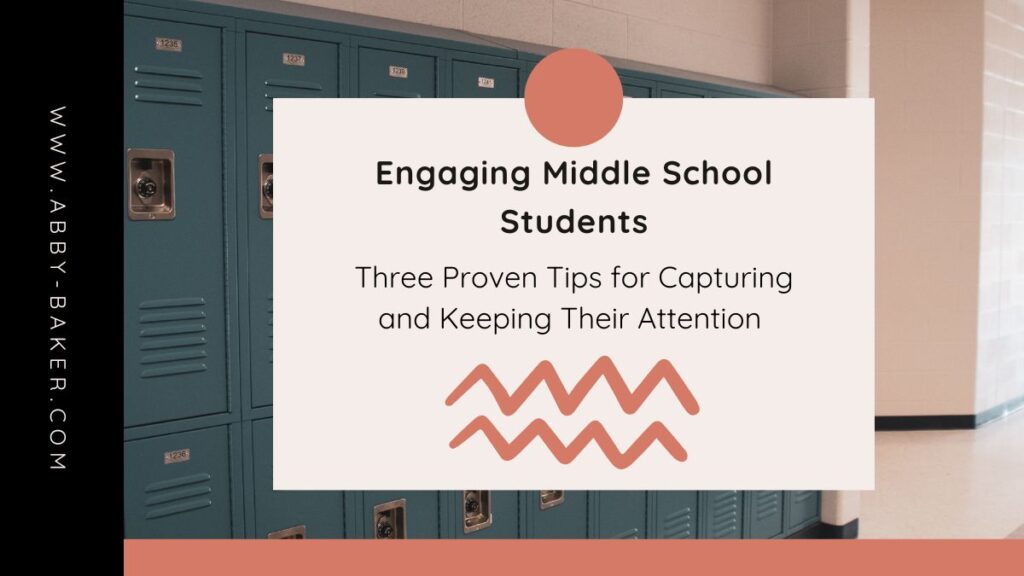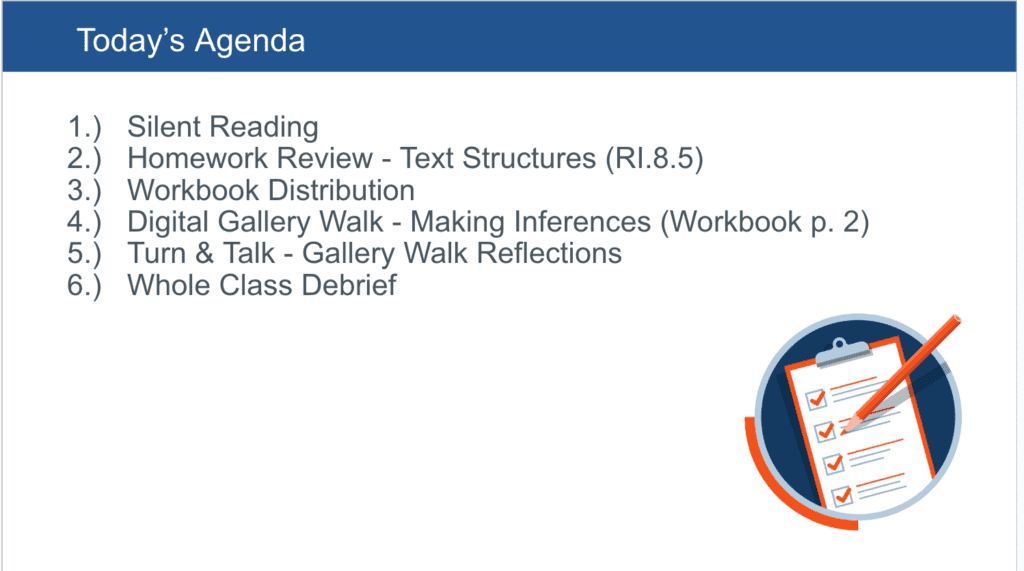Capturing a middle school student’s attention is one thing, but maintaining it is another. In today’s society, things are fast-moving, and not only with technology. Lesson success is often measured by student performance on exit tickets and assessments. However, student engagement is a precursor to student mastery of skills.

Keeping students engaged can seem like a daunting task, but it doesn’t have to be! We live in a society where instant gratification is expected. Think about it – if you send someone a text and they don’t immediately respond, you may become slightly agitated and impatient. Teenage attention spans need constant stimulation. This requires teachers to plan differently than we did ten or even five years ago.
Keeping Students’ Attention
1.) Review the daily agenda and your expectations. Communicate the class agenda with students, both verbally and in written form. Students like to know what’s coming. Think of this as your classroom itinerary – it sets both you and your students up for success!

Along with the day’s agenda, let students know what deliverables, or assignments, they will be expected to complete during class. Communicating your expectations for the class is like giving students an itinerary. In general, students are more attentive and better behaved if they know they will need to apply the lesson’s knowledge at the end of class.

Be Clear With Directions
2.) Give Clear Directions. This may seem like a no-brainer, but how many times have you had students ask you, “What are we doing?” after you have went over the directions? Communicating super clear directions helps minimize students’ need for you to repeat yourself like a broken record!
Give directions verbally and also posting somewhere visible is key. Include exactly what you want students to do. Don’t assume students know – be as explicit as possible to minimize any confusion.
If a student asks what they should be doing after you have gone over the directions (and at least one student will), have a peer repeat the directions to the student who asked. This not only holds students accountable, but puts ownership on the students.
Task instead of Tell
3.) Perhaps the best way to keep students’ attention is by giving everyone a task. Instead of telling students to think of a theme in the passage and share it with a friend, you might say, “In your notebook, I need everyone to write down one theme from the passage and cite one quote to support your theme. You will have three minutes to do this and then you will share with a partner.”
Everyone has a task, or something to do, which means that when it comes time to share, students will actually discuss the prompt! During this time, you should circulate the room and make note of students who are struggling or who are not completing the task.

As you get to know your classes, you can adjust the tasks. For example, you may have one class that works very well in partners, but another that is still mastering how to cooperate with each other. Each class period likely differs in what they need, so keep that in mind when assigning and scaffolding tasks.
There is no one-size-fits-all to keeping middle school students’ attention and it is certainly something that needs tweaked for each individual class period. Students who are engaged in a task are less likely to invent things to do themselves, so as a teacher, let’s ensure their learning plates are full each period!

